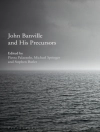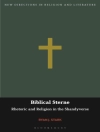This book brings together new contributions in Popular Fiction Studies, giving us a vivid sense of new directions in analysis and focus. It looks into the histories of popular genres such as the amatory novel, imperial romance, the western, Australian detective fiction, Whitechapel Gothic novels, the British spy thriller, Japanese mysteries, the ‘new weird’, fantasy, girl hero action novels and Quebecois science fiction. It also examines the production, reproduction and distribution of popular fiction as it carves out space for itself in transnational marketplaces and across different media entertainment systems; and it discusses the careers of popular authors and the various investments in popular fiction by readers and fans. This book will be indispensable for anyone with a serious interest in this prolific but highly distinctive literary field.
Tabela de Conteúdo
Introduction: The Fields of Popular Fiction; Ken Gelder.- PART I: HISTORIES OF POPULAR GENRES.- 1. ‘Love in the Time of Finance: Eliza Haywood and the Rise of the Scenic Novel’; Joe Hughes.- 2. ‘Colonial Australian Detectives, Character Type and the Colonial Economy’; Ken Gelder and Rachael Weaver.- 3. ‘’The Floodgates of Inkland were Opened’: Aestheticising the Whitechapel Murders’; Grace Moore.- 4. ‘Imperial Affairs: The British Empire and the Romantic Novel, 1890-1939’; Hsu-Ming Teo.- 5. ‘’The Future of our Delicate Network of Empire’:
The Riddle of the Sands and the Birth of the British Spy Thriller’; Merrick Burrow.- 6. ‘Did Indians Read Dime Novels?: Re-Indigenizing the Western at the Turn of the Twentieth Century’; Christine Bold.- 7. ‘Unno Jūza and the Uses of Science in Prewar Japanese Popular Fiction’; Seth Jacobowitz.- 8. ‘The New Weird’; Jeffrey Weinstock.- 9. ‘From Middle Earth to Westeros: Medievalism, Proliferation, and Paratextuality’; Kim Wilkins.- 10. ‘Denise Mina’s
Garnethill Trilogy: Feminist Crime Fiction at the Millennium’; Sabine Vanacker.- 11. ‘Popular Literatures in Québec: National Identity and ‘American’ Genres’; Amy J. Ransom.- 12. ‘Glass and Game: The Speculative Girl Hero’; Catherine Driscoll and Alexandra Heatwole.- PART II: AUTHORS, DISTRIBUTION, (RE)PRODUCTION.- 13. ‘Mediating Popular Fictions: From the Magic Lantern to the Cinematograph’; Helen Groth.- 14. ‘’The Power of Her Pen’: Marie Corelli, Authorial Identity and Literary Value’; Kirsten Mac Leod.- 15. ‘Popular Fiction in Performance: Gaskell, Collins and Stevenson on Stage’; Catherine Wynne.- 16. ‘Beyond the Antipodes: Australian Popular Fiction in Transnational Networks’; David Carter.- 17. ‘Adapting Ira Levin: A Case Study’; Imelda Whelehan.- 18. ‘An Assassin across Narratives: Reading
Assassin’s Creed from Videogame to Novel’; Souvik Mukherjee.- 19. ‘Fan Works and the Law’; Aaron Schwabach.- 20. ‘Readers of Popular Fiction and Emotion Online’; Beth Driscoll.- Select Bibliography.- Index.-
Sobre o autor
Ken Gelder is Professor of English at the University of Melbourne, Australia. His books include
Reading the Vampire (1994),
Uncanny Australia: Sacredness and Identity in a Postcolonial Nation (1998, with Jane M. Jacobs),
Popular Fiction: The Logics and Practices of a Literary Field (2004),
Subcultures: Cultural Histories and Social Practice (2007) and
New Vampire Cinema (2012).












